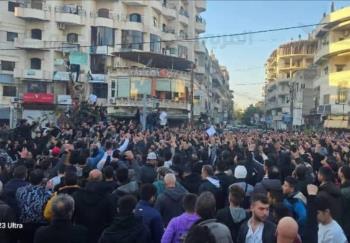Alwaght- Indian Foreign Minister Subrahmanyan Jaishankar visited Iran on Tuesday and met with his Iranian counterpart Mohammad Javad Zarif.
“A productive meeting with FM @JZarif during a stopover in Tehran. Discussed strengthening our bilateral cooperation and reviewed regional developments. Thank him for his gracious hospitality,” Jaishankar said in a Twitter post.
His visit to Tehran followed a surprise trip by Indian Defense Minister Rajnath Singh to Tehran on Sunday as he concluded his three-day visit to Russia.
What are the goals behind the Indian visits to Tehran? Why did the top Indian ministers rush to pay their diplomatic visits to Iran? To answer these questions, we must take into consideration the Indian investment in Iran’s Chabahar port and the Indian-Chinese competition in the region. New Delhi is seeking to regain its position against China in Iran and the whole region after it was kicked out of the Chabahar port railway project in June as Tehran and Beijing unveiled their strategic partnership roadmap.
Significance of Chabahar port for the Indians
The first goal bringing the Indian FM to Tehran is the project to expand Chabahar port southeast of the country, an attempt made to save Indian place in the port. The port is strategically important for the Indians who consider it as their gateway to West Asia. India, having ongoing disputes with its neighbors China and Pakistan, has decided to pick a new way of accessing the West and Central Asian countries. This strategy also helps it boost its interests in landlocked Afghanistan. Chabahar port, lying on the coasts of the Sea of Oman, facilitates Indian access to Afghanistan via sea.
India for the first time in 2002 proposed a partnership to Iran to expand Chabahar port but at the time no progress was made. Finally, during a visit to Tehran of Indian Prime Minister Narendra Modi in 2016 and President Ashraf Ghani of Afghanistan, Iran and India officialized the project. The first stage of the project was inaugurated in December 2017 with the presence of the Iranian President Hassan Rouhani and representatives from India and other regional states. India promised about $2 billion in investment for the project. India, Iran, Afghanistan Transit Corridor”, a railway that was trusted with the Indian Railway Construction Limited (IRCON) was the leading venture of the project, but contrary to Tehran’s anticipation, the Indian government failed to conclude it under the excuse of the US sanctions. India was dropped out of the project by Iran as a result. But the visit by the Indian FM carries a message of New Delhi’s willingness to continue cooperation in the strategic port.
Fear of Chinese presence in Chabahar
Yet another reason the Indian FM visited Iran is the Indian concerns about China’s involvement in the Chabahar port project. As India was removed from the port expansion project, Iran and India gave publicity their intention to engage in a 25-year strategic partnership which will also pave the way for Chinese presence in Chabahar. That is why Indians seem to be in a real tizzy about Chinese replacement of India in the port. As a response to the development, India in its 2020-2021 budget doubled the allocation for the Chabahar project.
Despite the Indian unease, Iran has rejected reports that it will rent out to China the part of Chabahar port where India was supposed to establish its business. Still, Tehran last year proposed to Beijing partnership between China-operated Pakistani port of Gwadar and Chabahar. It also offered interests to China in Jask port, which locates 350 kilometers from Chabahar port, and Chabahar Free Trade Zone.
Reacting to the growing Iranian-Chinese business of ports, former Indian ambassador to Tehran recommended to New Delhi watching closely the possibility of Chinese presence in the Iranian port that would damage the Iranian-Indian strategic partnership in Chabahar. He warned that Jask is in the west of Chabahar and close to the Strait of Hormuz. If it proceeds with its ambitions, China will expand its outreach along the Pakistani and Iranian coasts, the ambassador warned.
Security and political cooperation in Afghanistan
Indian FM also visited Iran in a bid to bolster the bilateral cooperation on Afghanistan. Tehran and New Delhi have pursued common security and economic goals in Afghanistan over the past years and they presently want to renew their bonds in the Central Asian country.
Over the past three decades, India and Iran have had common regional interests in Afghanistan. This took a new face with the collapse of the Soviet Union. From 1996 to 2001, Tehran and New Delhi supported the Northern Alliance, which took shape after the Taliban seized Kabul in 1996, against the Taliban. The two also backed toppling of the Taliban rule and are opponents to the re-rise of the militant group or a like-minded organization in Kabul. Although India does not see damage as big as Iran does due to its relatively long distance from Afghanistan, checking drugs production and smuggling in the war-ravaged country benefits the two countries. Containing the drugs production can cut off the source of income of counter-order groups like the Taliban and radical fellow groups and this is in the best interest of Iran and India.
In the same context, Iran and India in the past decade provided Afghanistan government with considerable economic aids, flagging themselves as among the limited number of countries keeping their aid commitment to Kabul. They for example considerably helped Afghanistan with the reconstruction of infrastructure including roads. Analysts agree that shored up Iranian-Indian strategic cooperation can play into the hands of Afghanistan in terms of security and economic interests.
Afghanistan’s developments are now in a sensitive stage as peace talks are starting between the government and the Taliban and foreign forces plan pullout, triggering fears of a power vacuum that would be abused by terrorist factions especially the ISIS. New Delhi and Tehran can mobilize their joint efforts to advocate political process, stability, and the fight against terrorism.
Business partnership
Despite zeroing its oil imports from Iran under the pressure of the US sanctions, India is one of the countries that wants to continue its trade ties with Iran. This willingness definitely was raised by FM Jaishankar during his visit to Tehran. Both are pushing towards inking a preferential trade agreement. Such an agreement with Iran would be profitable for India because it will receive 20 to 45 customs tariffs cut under it.
With Iran not being a member of the World Trade Organization, it does not commit to imposing limited and certain tariffs. Their trade volume in 2018, figures show, was about $18 billion. India exports tea, rice, soybean oil, carbon electrodes for use in electric appliances, paper, and medicine and imports oil, chemicals, and fertilizers. The trade rate over the past three years increased to 4.13 from 3.4, demonstrating Iranian trade significance for India. India can use its diplomatic power to shrug off the US limits for continued trade with Iran.



























